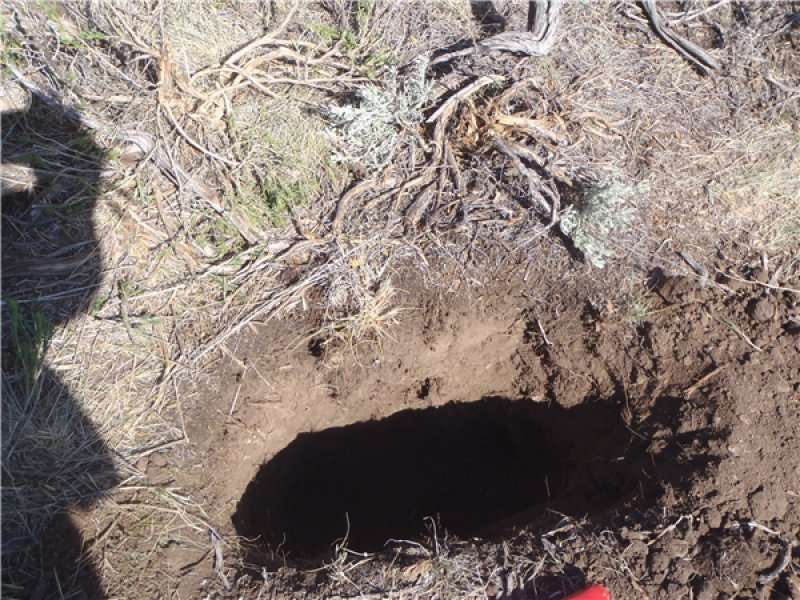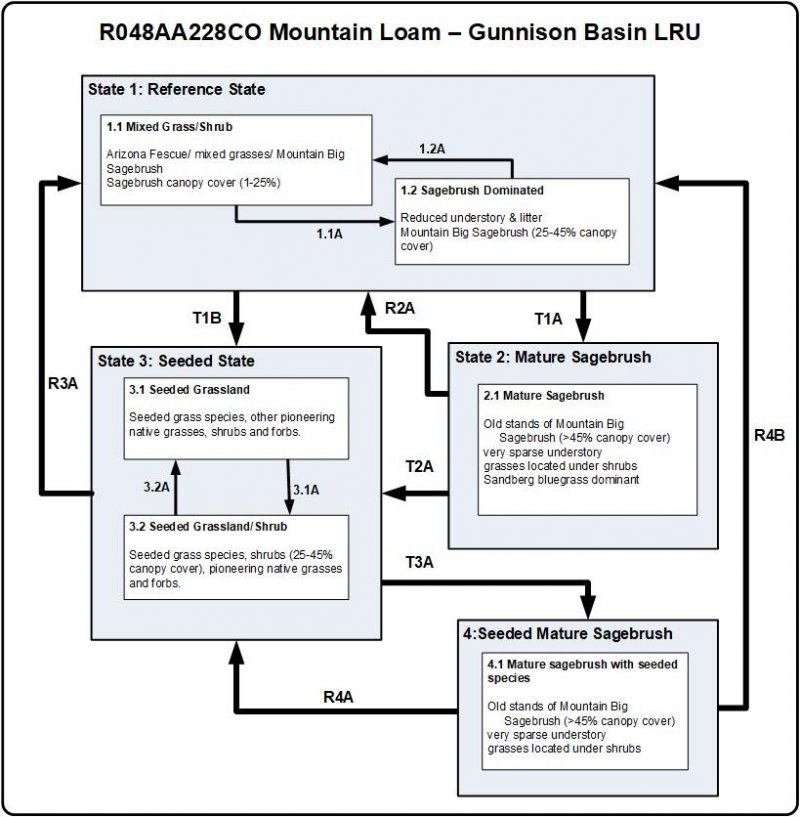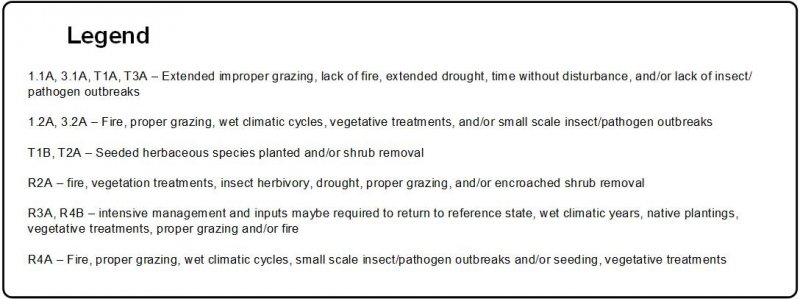Ecological dynamics
The description of this Mountain Loam site was drafted from the existing description of the Mountain Loam range site (R048XY228CO) (USDA-SCS, 1975). The original site concept covered the entire MLRA 48A, which consists of the mountainous areas in Colorado. The concept for this ecological site covers primarily the high mountain valleys and hills in the Gunnison Basin and Montrose-Ridgeway area. The site has a typic ustic moisture regime and a warm cryic to cool frigid temperature regime. This site is treeless; however, trees commonly are in the general vicinity. The site is below the spruce-fir treeline. The reference state is a cool-season bunchgrass/shrub community. The appearance of the site is grassland with woody shrubs such as mountain big sagebrush and several forbs. The dominant grass species are Arizona fescue, pine needlegrass, prairie Junegrass, bottlebrush squirreltail, Sandberg bluegrass, muttongrass, and upland sedges. The dominant shrub species is mountain big sagebrush. Yellow rabbitbrush may be present in small amounts, but the abundance will increase under some disturbances. Hood's phlox, sulphur-flower buckwheat, pussytoes, and redroot buckwheat are common.The species composition and relative productivity may fluctuate from year to year depending on precipitation and other climatic factors.
The Gunnison Basin is in a climatic zone where pinyon (Pinus edulis) and juniper (Juniperus osteosperma) normally occur; however, the basin generally does not support these species because of its unique ecological characteristics. The basin does support intergradations of Wyoming big sagebrush and mountain big sagebrush. The Gunnison Basin is recognized for its unusual ecological characteristics, including absence of certain plants and vertebrates. Pinyon pine is rare in the basin, and western rattlesnake is absent. Winters are extremely cold, and the cold air settles into the basin. Also, this area is drier than other regions at similar elevations. It is thought that the temperature, moisture, and topography are responsible for the sagebrush-dominant plant communities in the Upper Gunnison Basin (Emslie et al., 2005).
The Gunnison Basin is in the transition zone from Wyoming big sagebrush to mountain big sagebrush. Wyoming big sagebrush generally is in areas that receive 7 to 11 inches of precipitation and are at an elevation of 4,500 to 6,000 feet, but in Colorado it may be in areas of well drained soils at an elevation of as high as 8,000 feet. Mountain big sagebrush is at an elevation of 6,800 to 8,500 feet. Bonneville big sagebrush, a hybrid of Wyoming big sagebrush and mountain big sagebrush, has been observed at the head of Long Gulch near Gunnison, Colorado, at an elevation of about 8,000 feet (between the boundaries of Wyoming big sagebrush and mountain big sagebrush (Winward, 2004). Ultraviolet fluorescent tests showed intergradations between the two subspecies in areas that receive 8 to 15 inches of precipitation, but dominantly in areas that receive an average of 12 inches of precipitation (Goodrich et al., 1999). This ecological site is in areas that receive 14 to 19 inches of precipitation; thus, both the subspecies and the hybrid may be in this site, depending on elevation and aspect. Mountain big sagebrush may grow in areas with Wyoming big sagebrush (Johnson, 2000); however, Wyoming big sagebrush tends to be associated with the Dry Mountain Loam ecological site (R048AA231CO) and mountain big sagebrush with the Mountain Loam site. At the lower elevations, the Mountain Loam site is on the cooler, wetter north and northeast aspects adjacent to areas of the Dry Mountain Loam site. The Dry Mountain Loam site is on the warmer, drier south and west aspects at the higher elevations.
Soils, topographic location, climate, periodic droughts and fire influenced the stabilization of the Reference State on this site as was the case on most high mountain valley ecological sites. The Reference State is presumed to be as found by European settlers in the early 1800's developed under the prevailing climate over time along with the soils in their topographic location. Grazing and/or browsing by wildlife influenced the plant community as well. The resulting plant community was a cool season bunchgrass/shrub community. Sagebrush taxa in Colorado above 8500 feet in elevation are in relatively good condition and appear to be recovering slowly from the impacts during the settlement period of the west (Winward, 2004). Sagebrush below 8500 feet has been slower to recover from settlement of the west (Winward, 2004). The high elevation valley of the Gunnison Basin sits in a transitional area where the climate and topographic location helped recovery of the sagebrush communities after European settlement of the west.
Natural fire played an important role in the function of most high mountain valley sites, especially the sagebrush communities. Grasses such as needlegrasses and bluegrasses were dependent upon fire to stimulate them. Fire also kept sagebrush stands from getting too dense, while invigorating other sprouting shrubs such as serviceberry and snowberry. Fire helped to keep a balance between the grasses, forbs and shrubs. Plant community dynamics was improved by opening up canopies and stimulating forb growth creating a mosaic of different age classes and species composition. Other than sagebrush, the deep rooted shrub species that grow on the site are not easily damaged by fire. Shrubs which re-sprout (yellow rabbitbrush, and snowberry), are suppressed for a time allowing grasses to dominate. If periodic fire does not occur, then sagebrush will slowly increase and can begin to dominate the site. Mountain big Sagebrush communities are more prone to fire than Wyoming big sagebrush with fire return intervals ranging from 10-115 years for Wyoming big sagebrush year (West and Hassan 1985, Evers, et al, 2011, Johnson, 2000). Mountain big sagebrush becomes dominant on this site if periodic burning or some other method of brush control is not used (10 to 50 year intervals) (Goodrich et al., 1999, Arno and Gruell, 1983, Evers, et al, 2011, Johnson, 2000). Fire size prior to 1850 were most likely a large number of small to medium size mosaic burns and since 1980 can be typified by a few very large fires due to human caused changes (Evers, et al, 2011). This change in fire return intervals and intensities was cause by fire suppression and reduced fine-fuels from livestock grazing practices around the late 1800’s and early 1900’s. Treatment response will vary among sites due to differences in vegetation composition and abundance, soils, elevation, aspect, slope and climate (McIver, et al, 2010). Since fire is not always available to be applied, then other practices may necessary from time to time to help keep the community in balance.
There has been shrub die-off in several sagebrush taxa in the past 10-15 years due to several factors. The two dominant factors are disease/pathogens and drought. Disease/pathogens to cause die-off are believed to be tied to disease or stem/root pathogens occurring in dense over-mature sagebrush stands throughout the west. It appears to be in older age sagebrush stands that most cases of disease/pathogen die-off are thinning sage densities. While in other cases, the factors of drought and heavy browsing occurring in conjunction with disease/pathogens complete areas are dying.
The major forces that influence the transition from the reference plant community are continuous season long grazing by ungulates and/or the decrease in the fire frequency. As ungulate numbers increase and grazing use exceeds a plant's ability to sustain defoliation, the more palatable and more productive species, and decline in stature, productivity and density.
Currently, cheatgrass (Bromus tectorum) is present in the Gunnison Basin, but has not developed into a problem yet. Cheatgrass is limited in area in the Basin; it is found primarily along roadsides, and campgrounds (Gasch and Bingham, 2006). A germination study of cheatgrass seeds collected in the Gunnison Basin showed significant differences in germination characteristics with regards to storage duration and germination temperature (Gasch and Bingham, 2006). This may indicate that cheatgrass is adapting to colder temperatures in the Gunnison Basin, but further study is needed (Gasch and Bingham, 2006).
Variability in climate, soils, aspect and complex biological processes will cause the plant communities to differ. The species lists are representative and not complete list of all occurring or potentially occurring species on this site. The species lists are not intended to cover the full range of conditions, species and responses of the site. The State & Transition model depicted for this site is based on available research, field observations and interpretations by experts and could change as knowledge increases. This is the interpretive plant community and is considered to be the Reference Plant Community (RPC). This plant community evolved with grazing, fire, and other disturbances such as drought. This site is well suited for grazing by domestic livestock and wildlife and can be found on areas that are properly managed prescribed grazing.
State 1
Reference
Grass and minor amounts of woody plants such as sagebrush and several forbs make up most of the vegetative cover of this state. The site is treeless; however, trees commonly are in the general vicinity. The dominant grass is Arizona fescue, but subdominant grasses include muttongrass, Letterman’s needlegrass, and pine needlegrass. Sandberg bluegrass, elk sedge, Geyer’s sedge, and bottlebrush squirreltail also are present. The principal forbs are germander beardtongue, flowery phlox, sulphur-flower buckwheat, and hollyleaf clover. Flowery phlox is replaced by Hood’s phlox (spiny phlox) at the lowest elevations. The major shrubs are mountain big sagebrush and yellow rabbitbrush. This state is in areas where proper grazing management has been used over a long period. Proper grazing management allows for the establishment of understory species and increased vigor of stressed plants. Sagebrush may become dominant if the understory species are over-defoliated.
This state represents the community and function of the site prior to European settlement. Two dominant plant community phases are in the reference state. Fire and drought are natural disturbances that drive the pathways between the community phases. The site is subject to frequent periods of drought and fires of mixed intensity and frequency. The fire return interval (FRI) is 10 to 70 years in the more arid sagebrush areas (Wyoming big sagebrush) (Howard, 1999), and it is 15 to 40 years in the wetter mountain big sagebrush areas (Johnson, 2000). Sagebrush species less than 50 years old are easily killed by fire. Most forb species that re-sprout from a caudex, corm, bulb, rhizome, or rootstock recover rapidly following fire, and suffrutescent, low-growing or mat-forming forbs such as pussytoes or buckwheat may be severely damaged by fire (Miller and Eddleman, 2001).
Recurring fires less than 10 years apart maintain the grassland and prevent mountain big sagebrush from becoming established. Five to ten years are needed for mountain big sagebrush to establish and 15 to 20 years for it to return to pre-burn density and canopy cover (Nelle, 2000). Severe fires can slow re-establishment of mountain big sagebrush and extend the period needed for it to become dominant (Nelle et al., 2000). Total production of grass herbage reaches its maximum 2 to 5 years after burning, but the period of increased grass cover is short lived. It begins to decline as the abundance of sagebrush and other shrub species increases. The forb cover has greater biomass 5 to 15 years after burning (Nelle et al., 2000).
When the density and canopy cover of sagebrush are near maximum for several decades, sagebrush can become competitive with the understory forbs and grasses. Grazing can accentuate the competitiveness of sagebrush. Sagebrush has tap, lateral, and tertiary roots that give it a competitive advantage. Thinning of sagebrush crowns may be necessary for establishment of the understory. Treatment methods should be adapted to the specific needs of the site. Sagebrush recruitment is episodic in 7- to 9-year cycles, and sagebrush seeds have limited viability after the second year (Winward, 2004). Resting or deferring grazing after shrub management promotes the establishment of grasses and slows the establishment of sagebrush. Grazing by species that prefer grasses and forbs will speed up the establishment of sagebrush. Needle and thread (Bunting, 1985), Indian ricegrass, and muttongrass are very palatable and can be over-defoliated. Mountain big sagebrush, western wheatgrass, yellow rabbitbrush, Sandberg bluegrass (Bunting, 1985), prairie Junegrass (Bunting, 1985), blue grama, and pine needlegrass are less palatable and can increase in abundance unless burned or defoliated by browsing or grazing. The species most likely to increase in abundance are rabbitbrush and snakeweed.
Community 1.1
Mixed Grass/Shrub
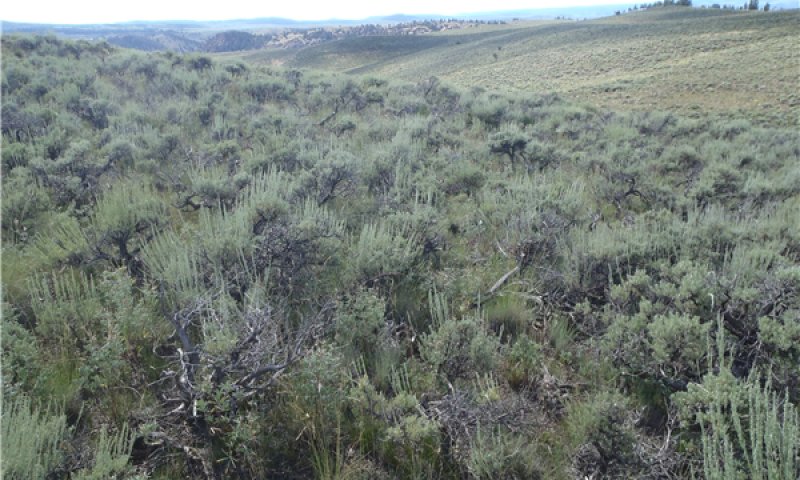
Figure 8. Mountain Loam site in an area of adequate moisture in spring.
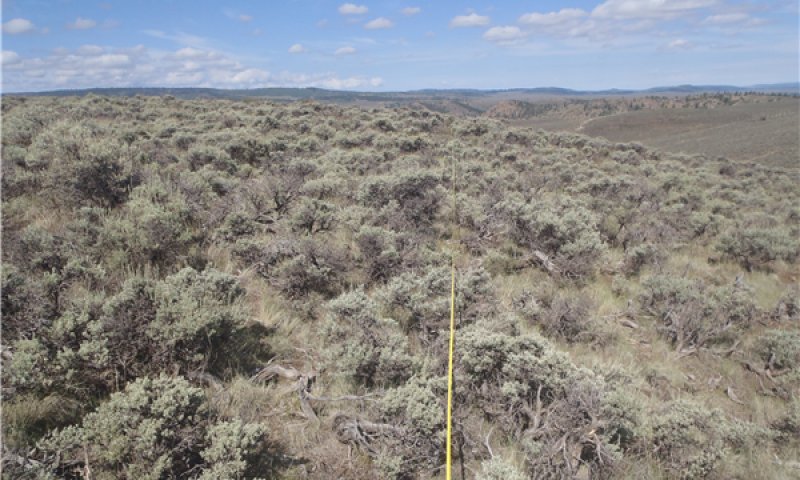
Figure 9. Mountain Loam site in a drought year.
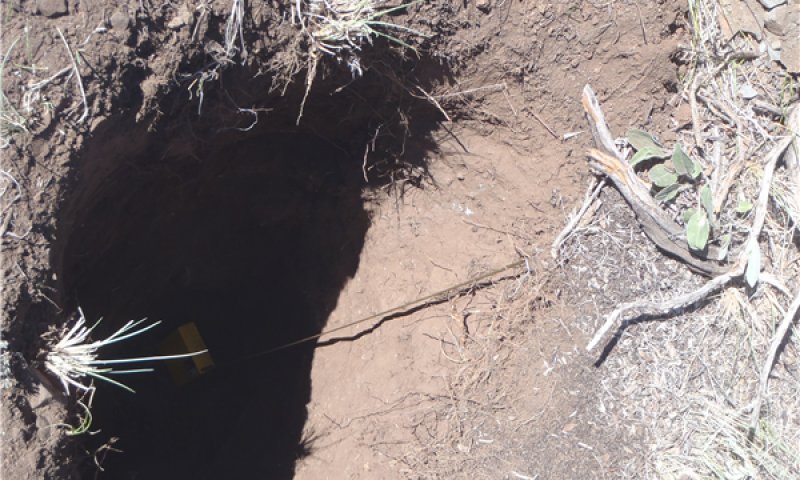
Figure 10. Soil pit in a Mountain Loam site.
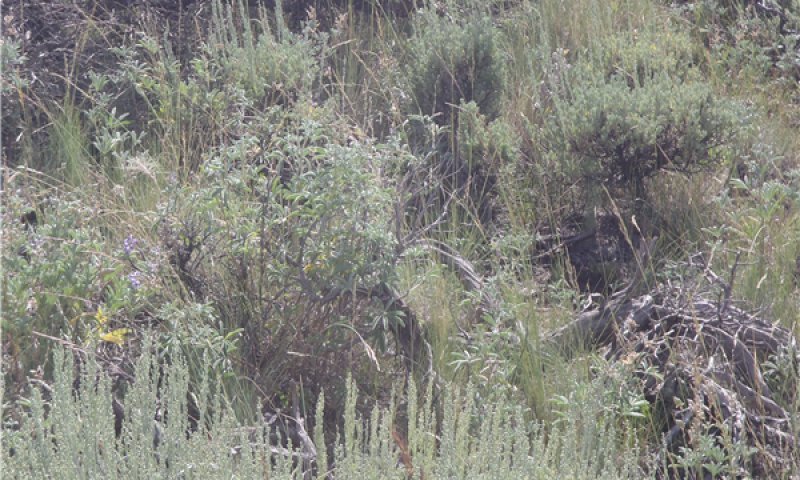
Figure 11. Closeup view of a Mountain Loam site.
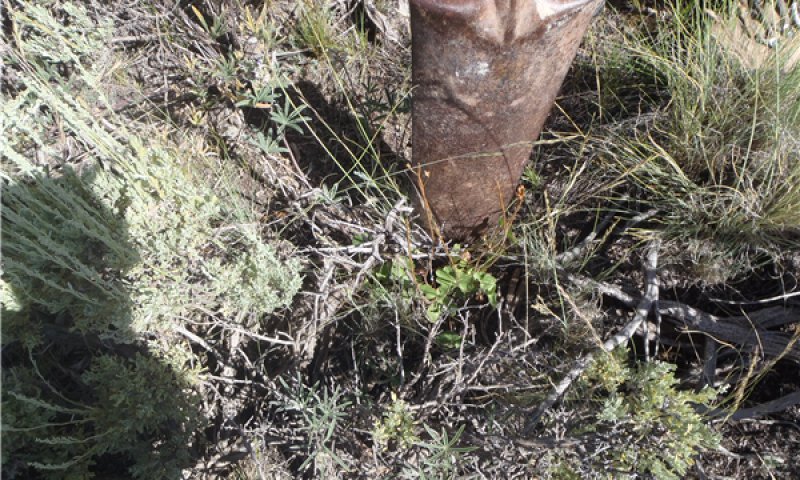
Figure 12. Ground view of a Mountain Loam site.
This community is characterized by mountain big sagebrush and an understory of Arizona fescue, pine needlegrass, prairie Junegrass, muttongrass, flowery phlox, sulphur-buckwheat, and pussytoes. Generally, this site is resistant to defoliation under proper grazing management and normal precipitation. Prolonged grazing during a period of drought may result in an increase in the abundance of grass species and shift the plant community to a mixed grass community rather than one that is dominantly Arizona fescue. The canopy cover of mountain big sagebrush can be 15 to 40 percent within 20 years after a low-intensity fire or other disturbance, and it can be as high as 40 to 50 percent in undisturbed areas (Winward, 2004; Miller and Eddleman, 2001; Nelle et al., 2000). After a severe fire, it may be 30 years or more before mountain big sagebrush becomes dominant again (Nelle et al., 2000).
This plant community is diverse, stable, and productive under normal precipitation. Litter is properly distributed, and a minimal amount is moved offsite. The natural plant mortality rate is low. Forbs are a dynamic component on this site; production varies greatly and is dependent on the annual precipitation. If the plant community is healthy, it has a diverse, productive herbaceous component capable of producing a seed source and a multi-aged overstory of sagebrush (Winward, 2004). Community dynamics, nutrient cycles, water cycles, and energy flow are functioning properly. The community can be maintained by properly managing grazing. This includes adequate deferment during the growing season to allow establishment of grass and recover the vigor of stressed plants. This community is resistant to many natural disturbances.
The species most likely to increase under continuous overgrazing are pine needlegrass, Letterman's needlegrass, Sandberg bluegrass, yellow rabbitbrush, pussytoes, and phlox.
Table 6. Annual production by plant type
| Plant type |
Low
(lb/acre) |
Representative value
(lb/acre) |
High
(lb/acre) |
| Grass/Grasslike |
500 |
700 |
900 |
| Shrub/Vine |
300 |
400 |
500 |
| Forb |
100 |
200 |
300 |
| Total |
900 |
1300 |
1700 |
Table 7. Ground cover
| Tree foliar cover |
0%
|
| Shrub/vine/liana foliar cover |
20-35%
|
| Grass/grasslike foliar cover |
25-45%
|
| Forb foliar cover |
3-15%
|
| Non-vascular plants |
0-2%
|
| Biological crusts |
0-2%
|
| Litter |
15-35%
|
| Surface fragments >0.25" and <=3" |
5-15%
|
| Surface fragments >3" |
0-5%
|
| Bedrock |
0-2%
|
| Water |
0%
|
| Bare ground |
10-20%
|
Table 8. Canopy structure (% cover)
| Height Above Ground (ft) |
Tree |
Shrub/Vine |
Grass/
Grasslike |
Forb |
| <0.5 |
– |
20-35% |
25-45% |
3-15% |
| >0.5 <= 1 |
– |
20-35% |
15-25% |
1-8% |
| >1 <= 2 |
– |
10-30% |
10-20% |
1-5% |
| >2 <= 4.5 |
– |
0-15% |
0-10% |
0-2% |
| >4.5 <= 13 |
– |
– |
– |
– |
| >13 <= 40 |
– |
– |
– |
– |
| >40 <= 80 |
– |
– |
– |
– |
| >80 <= 120 |
– |
– |
– |
– |
| >120 |
– |
– |
– |
– |
| Jan |
Feb |
Mar |
Apr |
May |
Jun |
Jul |
Aug |
Sep |
Oct |
Nov |
Dec |
| J |
F |
M |
A |
M |
J |
J |
A |
S |
O |
N |
D |
Community 1.2
Sagebrush Dominated
This community consists dominantly of mountain big sagebrush. It has more shrub cover and less understory than does the reference community. A few remnant herbaceous plants are in the understory, but they may not be able to re-seed the site if disturbed. The sagebrush is a single age stand. The abundance of Sandberg bluegrass and western wheatgrass is increased and that of prairie Junegrass is decreased. The abundance of low shrubs such as yellow rabbitbrush, spineless horsebrush, and broom snakeweed is increased, replacing some of the herbaceous component in the understory. Minimal understory helps to suppress low-intensity fires because of the limited fuel. The increased sagebrush canopy may be due to lack of disturbance such as wildfire. Cumulating effects of degrading sagebrush habitats include higher susceptibility to erosion and sedimentation, decreased water quality, decreased forage for domestic livestock, and decreased habitat for wildlife species (McIver et al., 2010). This phase has less diversity of species as compared to community phase 1.1.
| Jan |
Feb |
Mar |
Apr |
May |
Jun |
Jul |
Aug |
Sep |
Oct |
Nov |
Dec |
| J |
F |
M |
A |
M |
J |
J |
A |
S |
O |
N |
D |
Pathway 1.1A
Community 1.1 to 1.2
Improper grazing for extended periods during the growing season can reduce the fine fuel in the understory, which favors sagebrush encroachment and shortens the period to transition to community phase 1.2. Lack of fire over time can cause this transition (McIver et al., 2010). Extended periods of drought and lack of insects and pathogens can influence this pathway and create a single-aged stand of sagebrush. This transition is characterized by a loss of understory and an increase in bare ground between the shrubs and other evidence of soil erosion. Depletion of fine fuel due to inappropriate grazing has shifted the fire regime from relatively frequent, low or mixed severity fires (10 to 50 years mean fire return interval) to less frequent, high severity fires (more than 50 years mean fire return interval) (McIver et al., 2010). This pathway results in short-term loss of topsoil and reduction in water-holding capacity in the upper part of the soil because the limited understory does not prevent runoff.
Pathway 1.2A
Community 1.2 to 1.1
Periodic, naturally occurring fires increase the resilience of the community. This transitions it from phase 1.2 (shrub dominant) to phase 1.1 (Arizona fescue dominant) by reducing competition and the canopy cover of less fire-tolerant species (McIver et al., 2010). Proper grazing, wet periods, fire after seed set of the understory, and small-scale mortality of shrubs from insects and pathogens can move this community toward a diverse understory and away from a dense, single-aged stand of sagebrush (Evers et al., 2011). Drought and prescribed grazing or improper grazing can influence the time frame of this pathway. Improper browsing and proper grazing of the understory, frequent fires prior to seed set of sagebrush but after seed set of understory species, and large-scale die-off of sagebrush from insects or pathogens can cause this pathway (Evers et al, 2011). Short-term drought in winter and early in spring can facilitate an increase in the understory. Grasses respond quicker to moisture received in midsummer to late in summer than do shrubs. Management practices that could be used to mimic this pathway include applying herbicides, prescribed burning, seeding to native plants, and mowing.
State 2
Mature Sagebrush
State 2 is a sagebrush-dominant community. It has more shrub cover and less understory cover as compared to state 1. State 2 is an even-structured, single-aged stand. It has more Sandberg bluegrass and western wheatgrass and less prairie Junegrass as compared to State 1.
The abundance of low shrubs such as yellow rabbitbrush and spineless horsebrush is higher and that of herbaceous plants in the understory is lower as compared to state 1. State 2 also has a lower diversity of species. Improper grazing management that decreases the abundance of deep-rooted understory species can lead to compaction of the soil, erosion, decreased organic matter in the soil, and increased exposure due to a reduction in the amount of litter.
Community 2.1
Mature Sagebrush
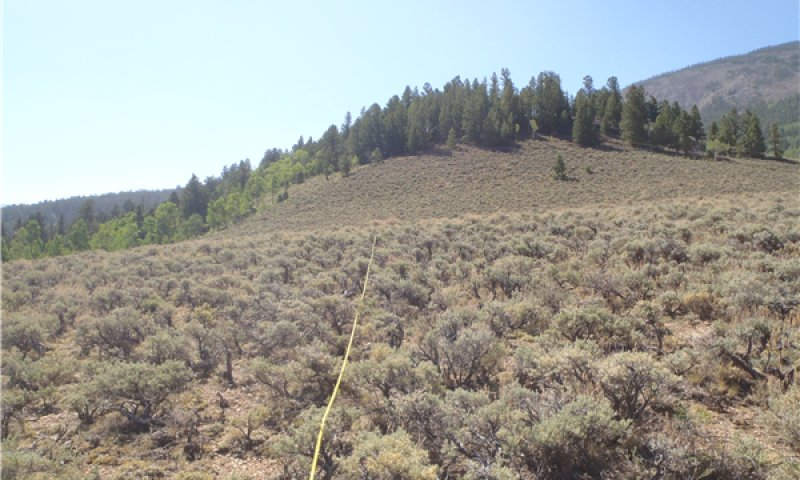
Figure 16. Area of Mountain Loam site.
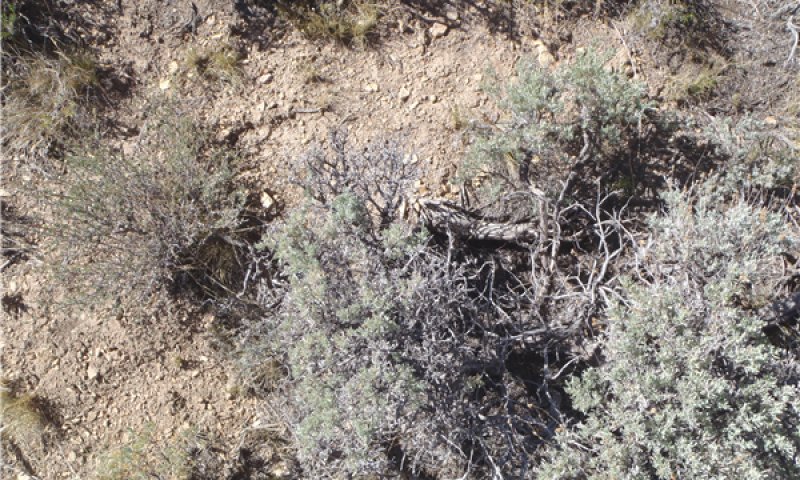
Figure 17. Ground view of Mountain Loam site.
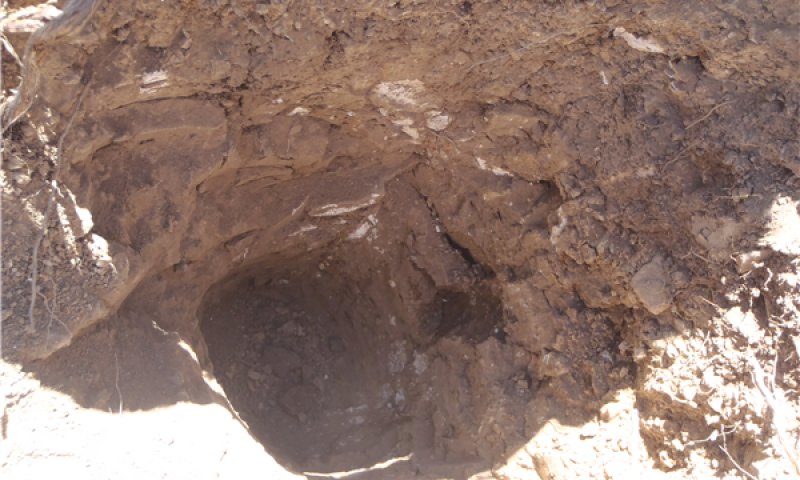
Figure 18. Soil pit in area of Mountain Loam site.
This community consists of a very dense stand of big sagebrush and little, if any, understory. A few remnant herbaceous plants may be present, but the amount may not be sufficient to reseed the site if it is disturbed. The dominant shrubs are mountain big sagebrush and yellow rabbitbrush, and the dominant forbs are Hood's phlox and some prickly pear cactus. Minimal understory helps to suppress low-intensity fires because of the limited fuel. The increased sagebrush canopy may be due to lack of disturbance such as wildfire. Cumulating effects of degrading sagebrush habitats include increased threat to property and life, higher susceptibility to erosion and sedimentation, decreased water quality, decreased forage for domestic livestock, and decreased habitat for big game and threatened wildlife species (McIver et al., 2010).
| Jan |
Feb |
Mar |
Apr |
May |
Jun |
Jul |
Aug |
Sep |
Oct |
Nov |
Dec |
| J |
F |
M |
A |
M |
J |
J |
A |
S |
O |
N |
D |
State 3
Seeded
This state is characterized by sagebrush removal due to fire or shrub management treatments, which may include chaining, disking, and mowing. The community dynamics are similar those of the reference state. This state could persist for long periods. Sagebrush will start to re-establish when the conditions are favorable. This site historically has been seeded to perennial species such as crested wheatgrass and Russian wildrye.
Due to changes in soil properties and the presence of seeded plants, this state is not likely to return to the reference state unless restoration practices are applied.
Community 3.1
Seeded Grassland
This community is characterized by introduced perennial grasses. Perennial species such as crested wheatgrass and Russian wildrye have been seeded. Sagebrush will re-establish from seed in adjacent areas or seedbanks. Small amounts of Sandberg bluegrass and western wheatgrass will slowly establish. Fire or other shrub management is needed to maintain this community. Short-term loss of topsoil and a reduction in the water-holding capacity of the upper part of the soil occur because the understory is not sufficient to prevent runoff.
| Jan |
Feb |
Mar |
Apr |
May |
Jun |
Jul |
Aug |
Sep |
Oct |
Nov |
Dec |
| J |
F |
M |
A |
M |
J |
J |
A |
S |
O |
N |
D |
Community 3.2
Seeded Grassland/Shrub
This community consists of seeded perennial grasses such as Russian wildrye and crested wheatgrass with mountain big sagebrush established in the overstory. The sagebrush is seeded from adjacent areas or the seedbanks, or it may be in the seed mix with the grasses.
| Jan |
Feb |
Mar |
Apr |
May |
Jun |
Jul |
Aug |
Sep |
Oct |
Nov |
Dec |
| J |
F |
M |
A |
M |
J |
J |
A |
S |
O |
N |
D |
Pathway 3.1A
Community 3.1 to 3.2
The natural pathway over time without fire. Improper grazing of the understory species and little, if any, seedling establishment or regeneration results in an increased canopy cover of sagebrush. Continuous season-long grazing favors establishment of sagebrush.
Pathway 3.2A
Community 3.2 to 3.1
Proper grazing and wet periods can move the state toward community phase 3.1. Shrub management, including use of herbicides, can be used to mimic the pathway. Mortality of establishing sagebrush from pathogens and insects can influence this pathway. Short-term drought in winter and early in spring will facilitate an increase in the understory. Grasses respond quicker to moisture received in midsummer and late in summer than do shrubs.
State 4
Seeded Mature Sagebrush
State 4 consists dominantly of sagebrush. This state has more shrub cover and less understory cover. The community is an even-structured, single-aged stand. Less introduced species are in this state. The abundance of low shrubs such as yellow rabbitbrush and spineless horsebrush is increased, replacing some of the herbaceous component in the understory. This state has minimal diversity of species. Improper grazing management leads to a decrease in the abundance of deep-rooted plants in the understory.
Community 4.1
Mature Sagebrush with Seeded Species
The live canopy cover of mountain big sagebrush in this community is more than 45 percent. The understory is minimal; little, if any, grasses and forbs are in the interspaces. The grasses and forbs present are directly under the canopy of mountain big sagebrush. Soil erosion is active.
Transition T1A
State 1 to 2
Improper grazing for extended periods during the growing season can reduce the amount of fine fuel in the understory, which favors sagebrush encroachment. Lack of fire over time can cause this transition (McIver et al., 2010). Extended periods of drought and lack of insect and pathogen activity can result in a single-aged stand of sagebrush. This transition is characterized by a decrease in the understory and an increase in the amount of bare ground between the shrubs and other evidence of soil erosion. The depletion of fine fuel due to improper grazing shifts the fire regime from relatively frequent fires of low to mixed severity (10- to 50-year mean fire return interval) to less frequent fires of high severity (more than 50-year mean fire return interval) (McIver et al., 2010). Short-term drought in winter and early in spring facilitates and increase in the understory. Grasses respond quicker to moisture received in midsummer and late in summer than do shrubs. Loss of topsoil and a reduction in the water-holding capacity in the upper part of the soil occur when the understory is not sufficient to prevent runoff.
Transition T1B
State 1 to 3
Historically, this transition has resulted from a catastrophic wildlife but it can be induced by human activity (shrub management or prescribed burning). Introduced species are seeded. Short-term loss of topsoil and a reduction in the water-holding capacity in the upper part of the soil occurs, and the diversity of species is decreased.
Restoration pathway R2A
State 2 to 1
This transition is caused by catastrophic fire or other natural disturbances or by human activity (shrub management or prescribed burning). Native species are seeded.
Transition T2A
State 2 to 3
This transition is caused by human activity (shrub management or prescribed burning) or a catastrophic wildfire. Introduced species are seeded.
Restoration pathway R3A
State 3 to 1
This site may be restored to resemble the Arizona fescue and mountain big sagebrush community of the reference state by seeding commercial mixtures of native grasses, forbs, and shrubs. Selective removal of introduced species also may be needed. If properly managed, a semblance of the diversity and complexity of the reference state can be restored.
Transition T3A
State 3 to 4
Improper grazing for extended periods during the growing season can reduce the amount of fine fuel in the understory, which favors sagebrush encroachment. Lack of fire over time can cause this transition (McIver et al., 2010). Extended periods of drought and lack of insect and pathogen activity can result in a single-aged stand of sagebrush. This transition is characterized by a decrease in the understory and an increase in the amount of bare ground between the shrubs and other evidence of soil erosion. The depletion of fine fuel due to improper grazing shifts the fire regime from relatively frequent fires of low to mixed severity (10- to 50-year mean fire return interval) to less frequent fires of high severity (more than 50-year mean fire return interval) (McIver et al., 2010). Short-term drought in winter and early in spring facilitates an increase in the understory. Grasses respond quicker to moisture received in midsummer and late in summer than do shrubs. Loss of topsoil and a reduction in the water-holding capacity in the upper part of the soil occur when the understory is not sufficient to prevent runoff.
Restoration pathway R4B
State 4 to 1
The site may be restored to resemble the western wheatgrass and mountain big sagebrush community in the reference state by seeding commercial mixtures of native grasses, forbs, and shrubs. Selective removal of introduced species also may be needed. If properly managed, a semblance of the diversity and complexity of the reference state can be restored. This restoration pathway is intensive if attempted on a large scale.
Restoration pathway R4A
State 4 to 3
Fire and wet periods can cause the mature, single-aged shrub communities to transition to grassland if proper grazing is implemented and sufficient seed is in the seedbank to regenerate the understory species. If sufficient seed or mature plants are not available, reseeding may be needed. Shrub management practices such as prescribed burning and prescribed grazing can be used to assist in restoring state 4 to state 3.


